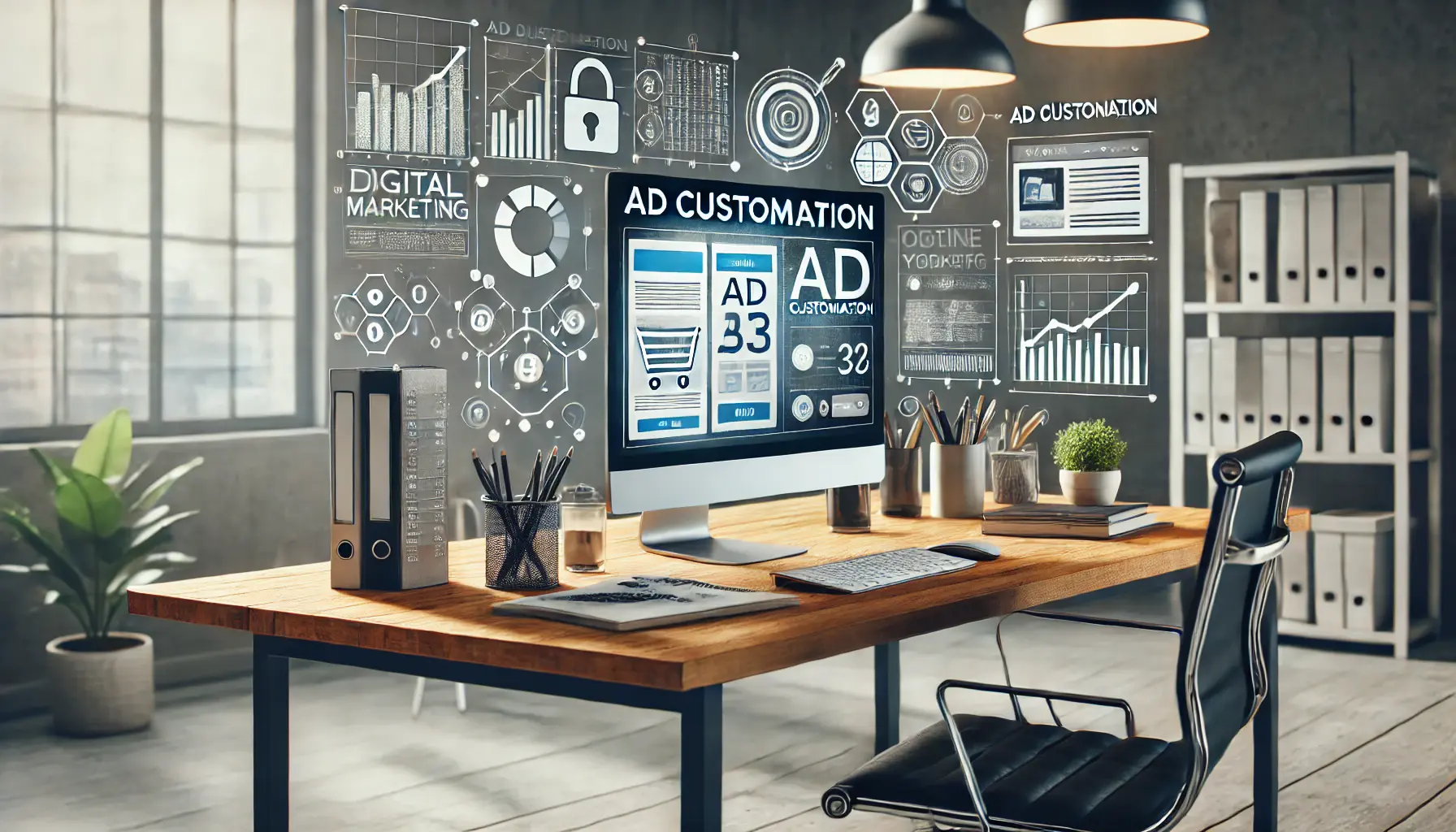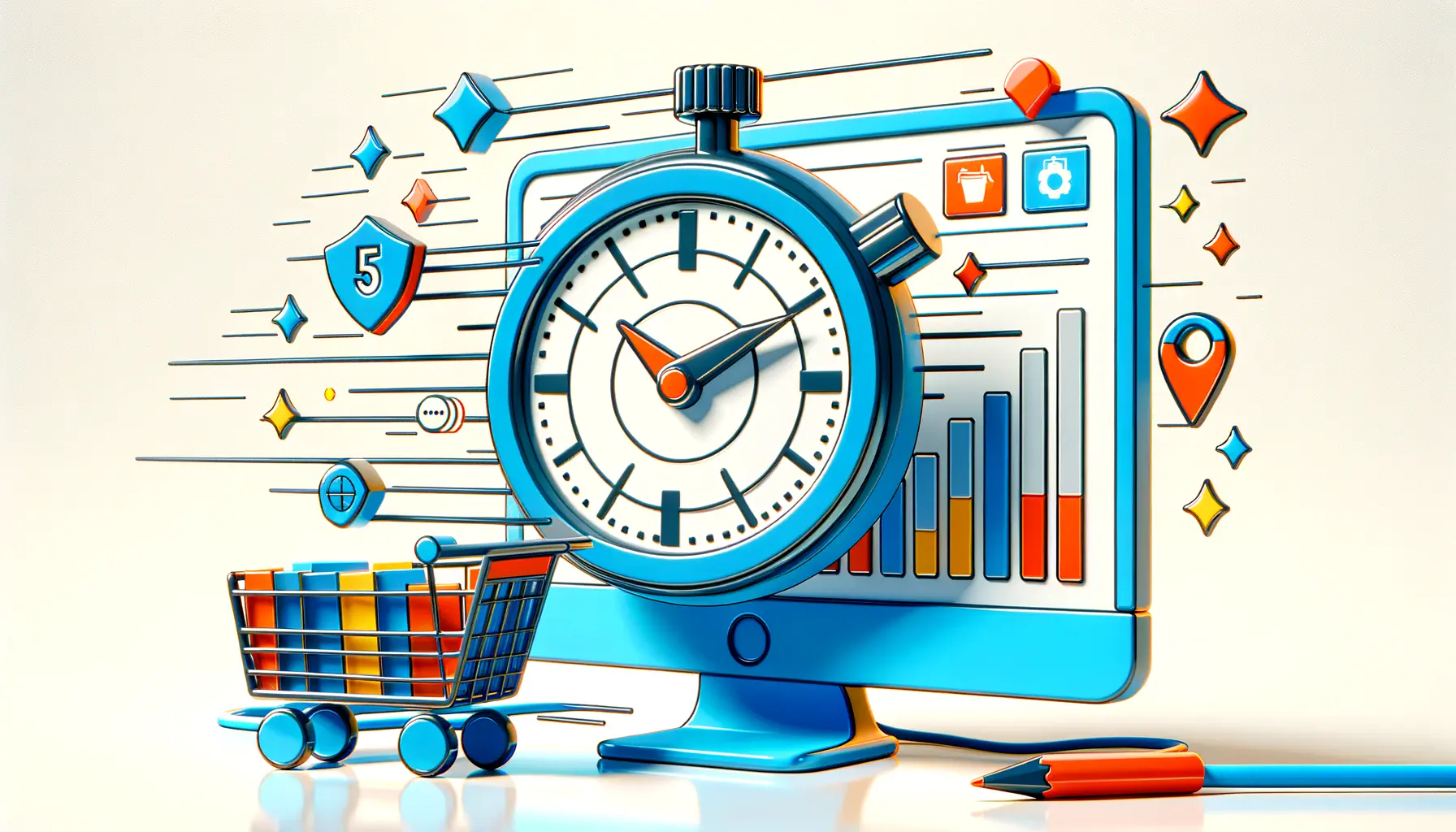In today’s competitive retail scenery, it is not just enough to impress with qualitative products and attractive prices.
Your customers need to be impressed with your ability to talk specifically to their individual needs and preferences.
That is exactly where ad customization comes into play.
By tailoring your advertising efforts to reflect the unique interests of your audience, you can create more captivating and effective marketing campaigns that not only drive sales but also foster customer loyalty.
- Understanding Ad Customization in Retail
- Creative Idea 1: Personalized Product Recommendations
- Creative Idea 2: Location-Based Targeted Advertising
- Creative Idea 3: Dynamic Content Based on User Behavior
- Best Practices for Implementing Ad Customization in Retail
- Summary: Unlocking Retail Success Through Ad Customization
- Frequently Asked Questions About Ad Customization
Understanding Ad Customization in Retail
Ad customization, also known as personalized advertising, involves creating tailored marketing messages that resonate with individual consumers based on their behaviors, preferences, and demographicsStatistical data relating to a population, such as age, gender, and income, used for targeting specific audiences..
In the retail sector, this strategy is particularly powerful, as it allows businesses to present products and offers that align closely with what each customer is seeking.
But why is ad customization so crucial for retailers like you?

Illustration of ad customization with user behavior analytics and tailored ad visuals.
Definition and Importance of Ad Customization
At its core, ad customization is about delivering the right message to the right person at the right time.
By leveraging data such as past purchase history, browsing behavior, and demographic information, retailers can craft advertisements that are highly relevant to each consumer.
This relevance not only captures attention but also increases the likelihood of conversion.
Consider this: when you receive an ad showcasing products you’ve previously shown interest in, aren’t you more inclined to click through or make a purchase?
That’s the power of ad customization at work.
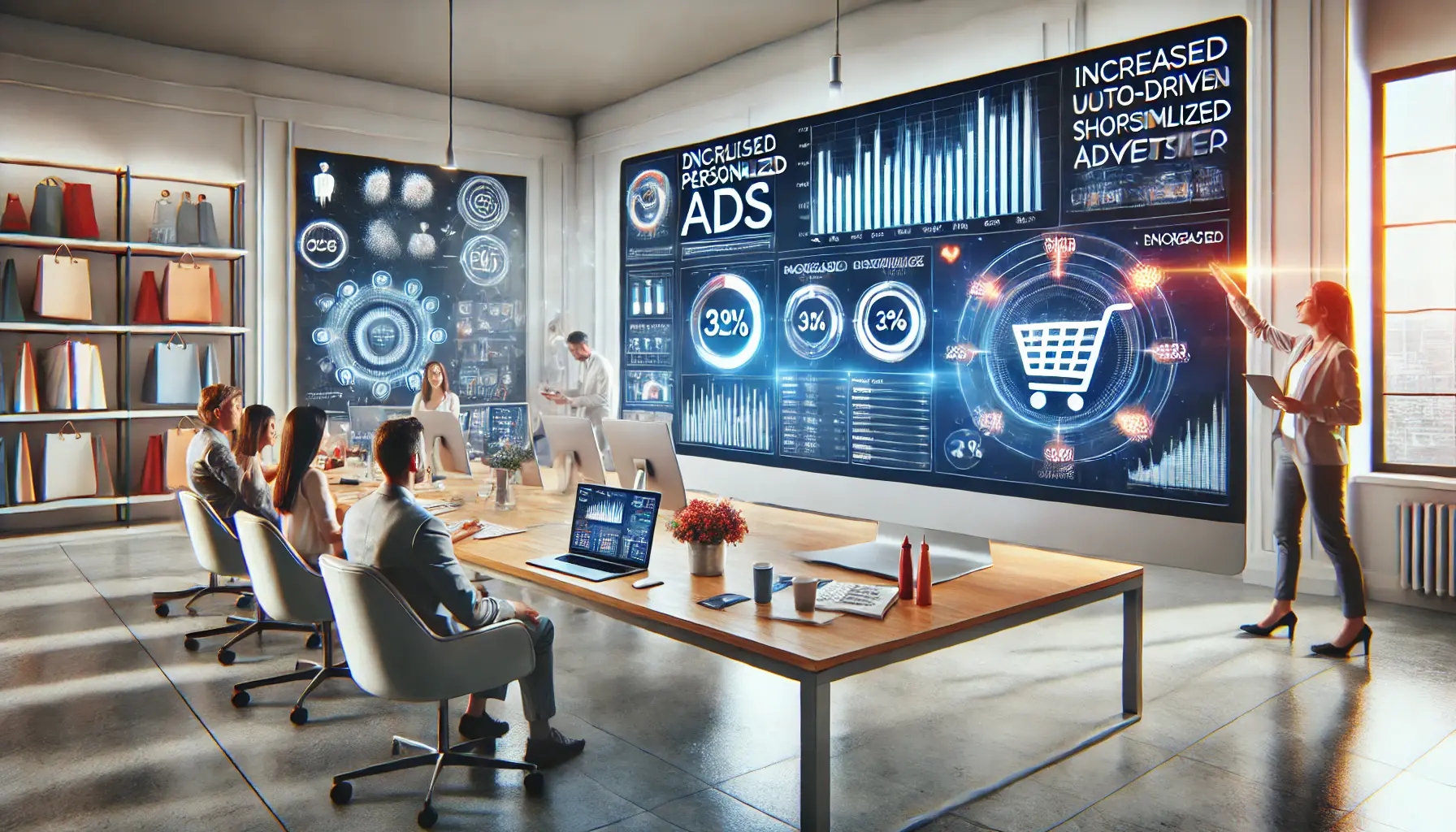
Visual representation of the benefits of personalized advertising for retail stores.
Benefits of Personalized Advertising for Stores
Implementing ad customization in your retail strategy offers several significant advantages:
- Increased Engagement: Personalized ads are more likely to catch the eye of consumers, leading to higher engagement rates.
- Improved Conversion Rates: When customers find products matching their interests, they are more likely to buy them.
- Enhanced Customer Loyalty: Personalized advertising makes customers feel valued and understood, thus ensuring their loyalty.
- Better Return on Investment (ROI): You can manage your marketing budget more effectively by targeting only the audience most relevant to your business, which in turn reduces waste.
In fact, various research studies have shown that retail personalizationThe process of tailoring content or experiences to meet the individual preferences of users. can raise conversion rates by 10-15% and decrease marketing costs by 10-20%.
As you have probably noticed, ad customization is not just a buzzword but a strategic means to seriously position your store for success.
By understanding and applying personalized advertising, you are putting your business in a place where the evolving expectations of today’s consumers are met with increased satisfaction and heightened sales.
Ad customization enables retailers to target consumers effectively, aligning product offers with individual preferences to enhance engagement and sales.
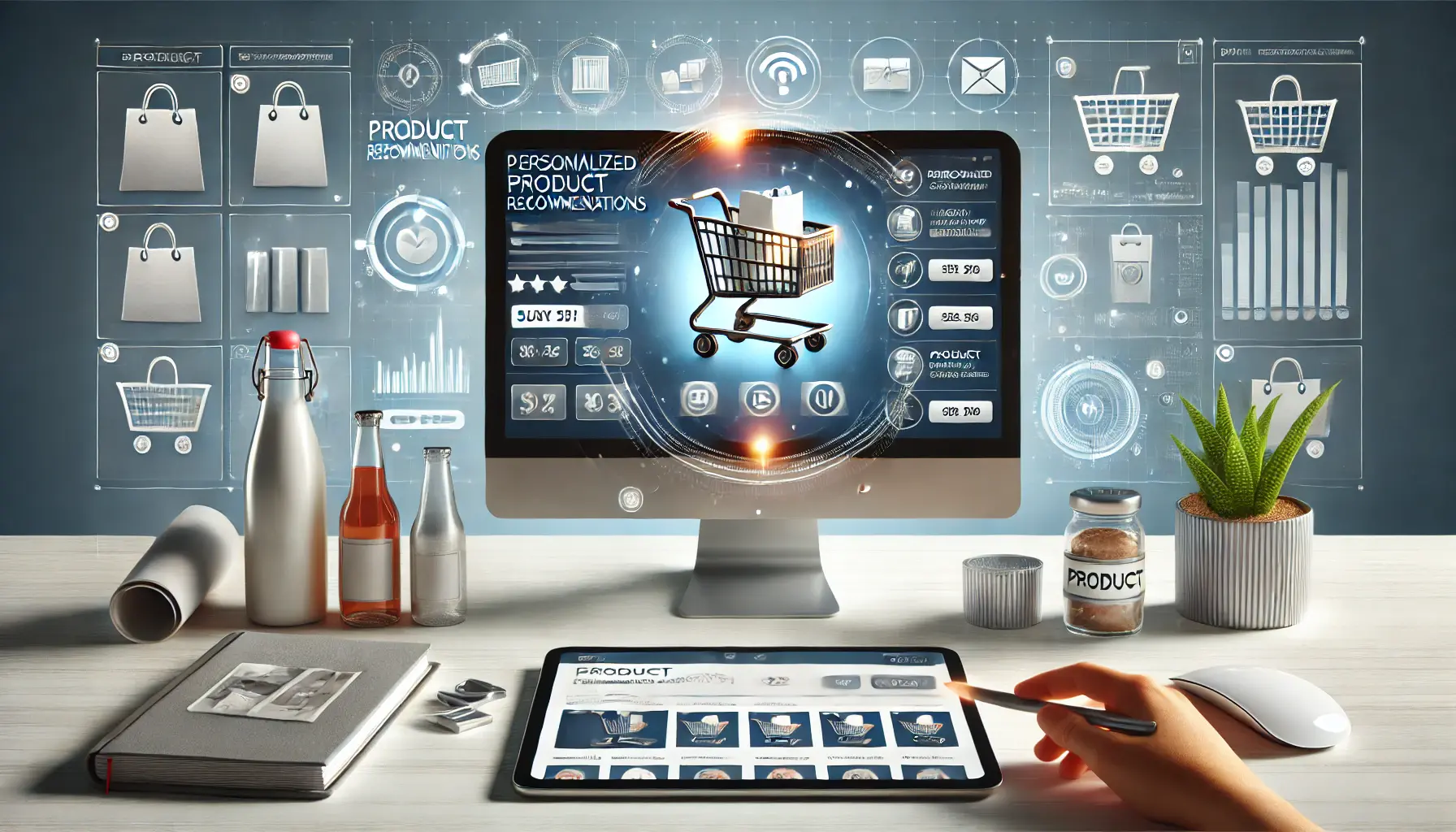
Illustration of personalized product recommendations in a digital shopping environment.
Creative Idea 1: Personalized Product Recommendations
Imagine walking into a store where every product display seems tailored just for you.
In the digital retail world, personalized product recommendations aim to recreate this bespoke shopping experience, enhancing customer satisfaction and boosting sales.
But how can you effectively implement this strategy in your store?

Illustration of leveraging customer data to create tailored marketing suggestions.
Leveraging Customer Data for Tailored Suggestions
To provide customers with personalized product recommendations, gather customer data regarding browsing history, past purchases, and demographic information.
This information helps you understand individual preferences and recommend specific products tailored to their tastes.
Consider the following steps to effectively use customer data:
- Data Collection: Use website analytics, customer accounts, and purchase histories as starting points for gathering valuable data.
- Data Analysis: Leverage analytical tools to identify patterns and preferences within the collected data.
- Segmentation: Group customers based on similar behaviors or interests to streamline the recommendation process.
By implementing these steps, you can create a more personalized shopping experience that resonates with your customers and increases satisfaction.

Illustration of AI-powered dynamic product ads in a digital marketing environment.
Implementing AI for Dynamic Product Ads
Artificial Intelligence (AI) helps serve dynamic product ads, which change in real time based on individual customer behavior.
AI algorithmsA set of rules or processes followed by a computer to solve problems or make decisions. analyze the data to predict and showcase products customers are most likely to buy, significantly improving engagement and conversion rates.
Here’s how AI can elevate ad customization to the next level:
- Real-Time Personalization: AI analyzes customer interactions instantly, allowing for immediate adjustments in product recommendations.
- Automated Content Creation: AI-powered tools generate customized ad content at scale, providing each customer with a unique and tailored experience.
- Smart Targeting: AI identifies the most relevant products for each customer, increasing the probability of conversion and driving sales.
Integrating AI into your ad customization strategy not only streamlines the process but also ensures your ads are relevant, engaging, and tailored to each individual customer.
By embracing personalized product recommendations and leveraging AI-driven dynamic ads, you are positioning your store to meet the evolving expectations of today’s consumers, leading to greater satisfaction and a measurable boost in sales.
Leverage AI-powered tools to dynamically recommend products that match user behaviors and tastes, creating a tailored shopping experience.
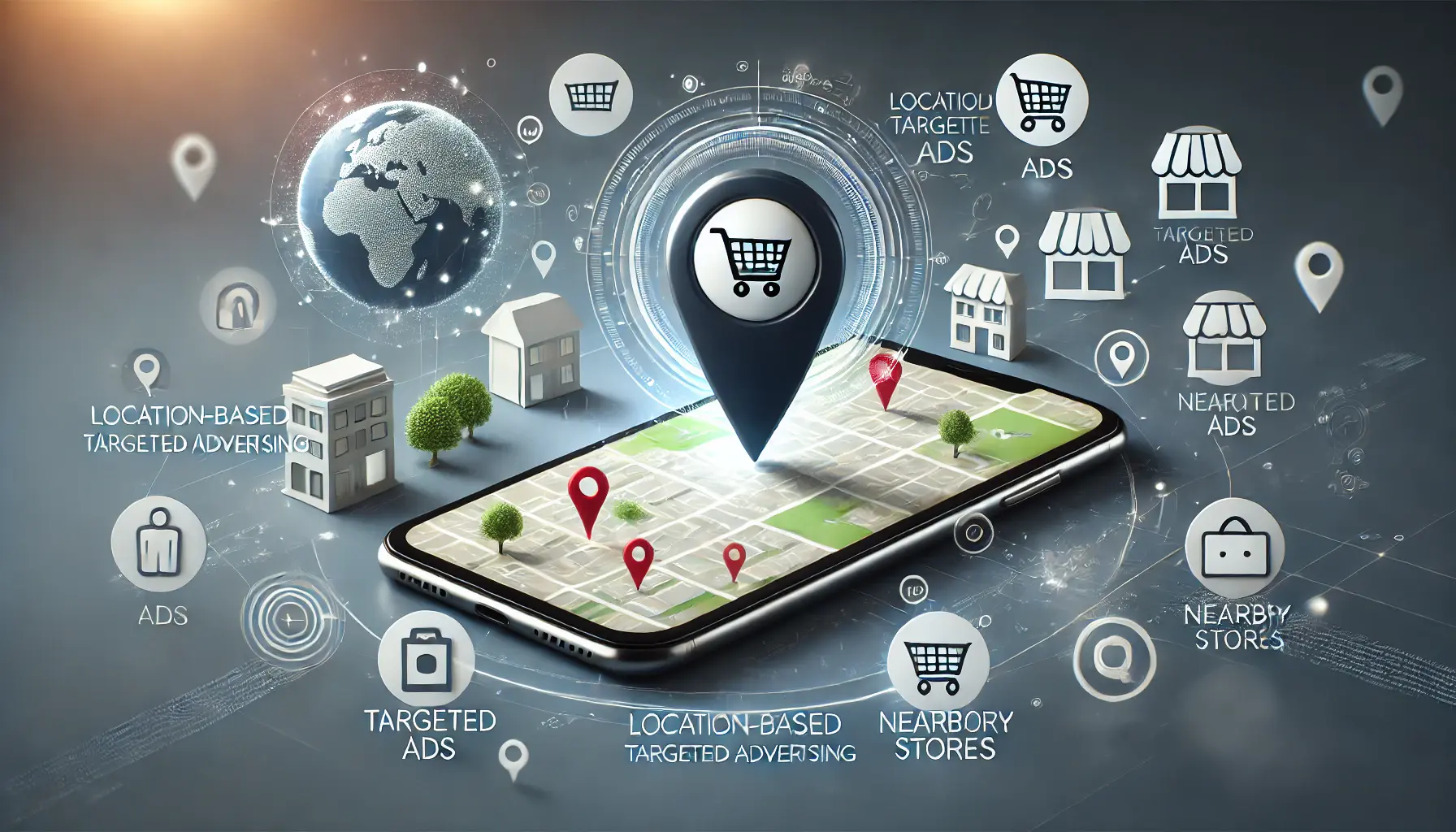
Illustration of location-based targeted advertising using geolocation data.
Creative Idea 2: Location-Based Targeted Advertising
Think of reaching your customers at the right moment with a personalized message, precisely when they are near your store or in a location relevant to your products.
Such is the power of location-based targeted advertising, a strategy that uses geolocation data to deliver timely and relevant ads to potential customers based on their physical whereabouts.
But how can you effectively apply this strategy in your retail business?

Illustration of utilizing geotargeting to effectively reach local customers with personalized ads.
Utilizing Geotargeting to Reach Local Customers
Geotargeting involves delivering ads to consumers based on their geographic location, allowing retailers to tailor marketing messages to local audiences.
By focusing on specific areas, you can ensure your promotions resonate with the local community, increasing engagement and driving foot traffic to your store.
Consider these steps to effectively utilize geotargetingA digital marketing strategy that targets users based on their geographic location.:
- Define Your Target Area: Determine the locations where your potential customers reside or frequently visit.
- Customize Ad Content: Tailor messages to reflect events, culture, or needs specific to the local area to increase ad relevance.
- Choose the Right Platforms: Use advertising platforms that offer geotargeting features, such as Google Ads or social media networks.
By implementing geotargeting, you can create personalized and location-specific advertisements that attract local customers and enhance your marketing effectiveness.
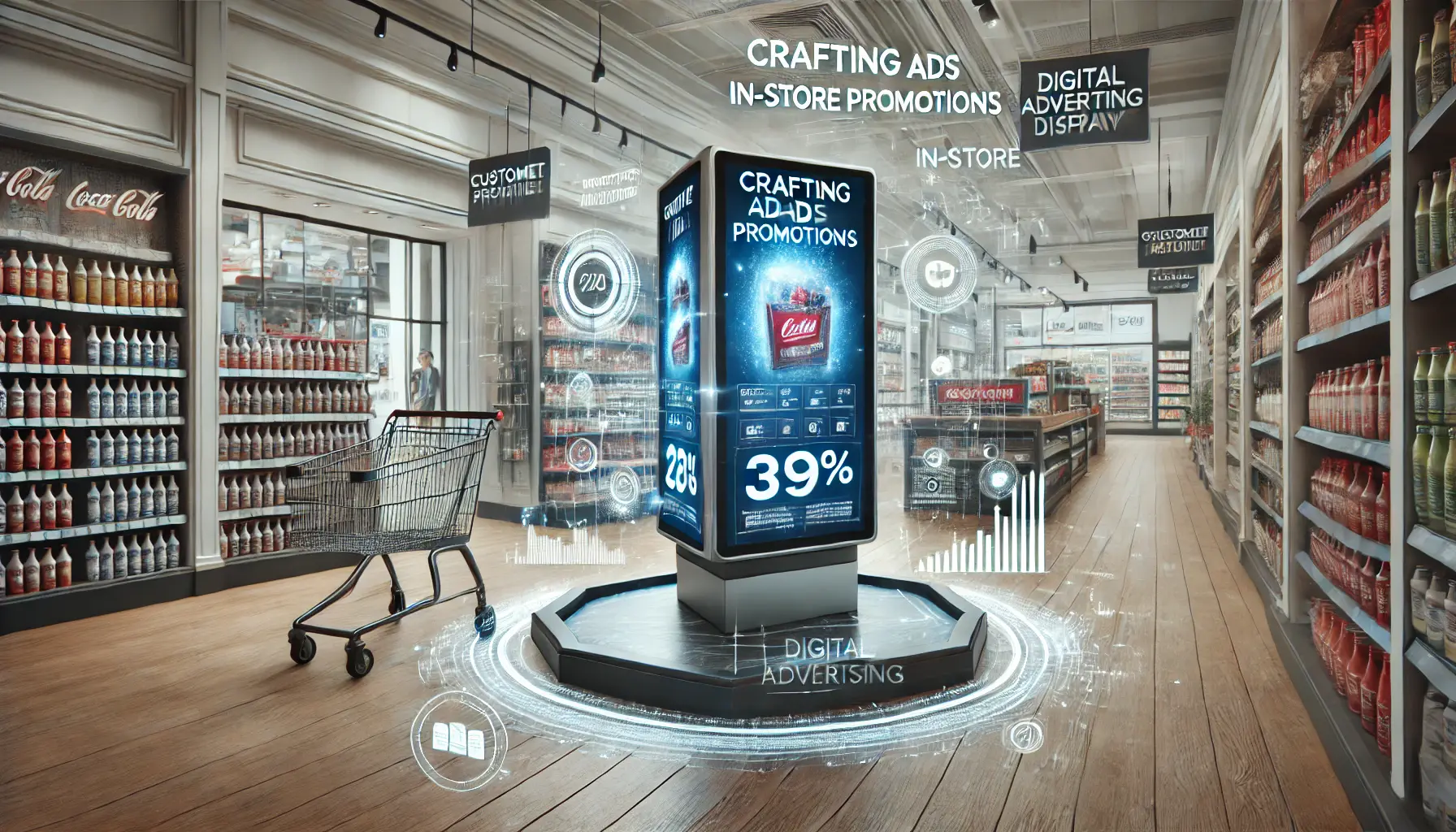
Illustration of creating effective ads for in-store promotions in a retail setting.
Crafting Ads for In-Store Promotions
Location-based targeted advertising is particularly effective for promoting in-store events or special offers.
By targeting customers who are in proximity to your store, you can entice them with timely promotions, encouraging immediate visits and purchases.
Here’s how to craft effective ads for in-store promotions:
- Highlight Exclusive Offers: Promote deals available only in-store to incentivize customers to visit.
- Use Urgency: Add time-sensitive language, such as “Today Only” or “Limited Time Offer,” to create a sense of urgency.
- Include Clear Calls to Action: Direct customers on the next steps, such as “Visit Us Now” or “Find Us Nearby.”
By focusing on location-based advertising for in-store promotions, you can drive foot traffic, increase sales, and further enhance your customers’ shopping experience.
Location-based targeted advertising allows you to connect with customers in meaningful ways, delivering personalized content that aligns with their immediate context and needs.
This strategy enhances customer engagement and adds significant value to the overall success of your retail business.
Use geotargeting strategies to engage local customers with timely, location-specific offers and drive in-store visits.

Illustration of dynamic content personalization based on user behavior in a digital workspace.
Creative Idea 3: Dynamic Content Based on User Behavior
Imagine visiting a website where the content adapts in real-timeA process or system that operates instantly without noticeable delays. to your interests and actions.
This is the essence of dynamic content, which changes automatically based on user data, preferences, and behavior.
By implementing dynamic content, you can create a personalized shopping experience that engages customers and drives conversions.
But how can you effectively apply this strategy in your retail business?

Illustration of the benefits of dynamic content personalization in a digital workspace.
Understanding Dynamic Content and Its Benefits
Dynamic content refers to web or advertising material that changes based on user behavior, preferences, or real-time data.
Unlike static content, which remains constant, dynamic content adapts to provide a more personalized and engaging user experience.
This adaptability can enhance user engagement and improve the relevance of your marketing messages, making them more appealing to your audience.
Consider these benefits of implementing dynamic content:
- Improved User Experience: By making the content relevant to the user, you create a more engaging experience that leads to higher levels of customer satisfaction and loyalty.
- Increased Engagement: Personalized content is more likely to capture the attention of users, resulting in higher engagement rates.
- Better Conversion Rates: Users are more likely to take specific actions, such as making purchases, when the content aligns with their interests and behaviors.
By using dynamic content, you can develop a more personalized and efficient marketing strategy that will better connect with your customers.

Illustration of implementing real-time personalization with dynamic content and user interactions.
Putting Real-Time Personalization into Practice
To effectively put real-time personalization into practice, consider the following strategies:
- Data Collection: Collect data regarding user behavior, preferences, and demographics from website analytics, customer accounts, and purchase histories.
- Data Analysis: Use analytical tools to identify patterns and preferences in the collected data, allowing you to create personalized content for individual users.
- Personalized Recommendations: Make product recommendations using AI-powered algorithms that base their suggestions on users’ behavioral and preferential trends.
- Dynamic Website Content: Integrate dynamic elements into your website, such as personalized greetings, tailored product suggestions, and customized offers, to enhance the user experience.
By implementing these methods, you will be able to offer a more dynamic and personalized shopping experience that meets the changing expectations of today’s consumers.
This not only increases customer satisfaction but also drives higher sales and loyalty.
Dynamic content adapts to user interactions, delivering personalized experiences that improve engagement and drive conversions.

Illustration of best practices for ad customization in retail with customer data and analytics.
Best Practices for Implementing Ad Customization in Retail
Ad customization is a powerful strategy that enables retailers to deliver personalized experiences to their customers, enhancing engagement and driving sales.
To effectively implement ad customization in your retail business, consider the following best practices:

Illustration of collecting and analyzing customer data with analytics and tracking tools.
1. Collect and Analyze Customer Data
Begin by gathering data from various touchpointsThe various points of interaction between a customer and a brand, such as a website, app, or physical store., including websites, mobile apps, social media, and in-store interactions.
Utilize advanced analytics tools to derive actionable insights from this data, enabling you to understand customer preferences, behavior patterns, and purchase intent.
This foundation is crucial for effective ad customization.

Illustration of audience segmentation with customer groups and data analytics.
2. Segment Your Audience
Once data is collected, segment your customer base into distinct groups based on common characteristics or behaviors.
This segmentationThe practice of dividing a market or audience into smaller, more manageable groups based on shared characteristics or behaviors. allows for more targeted and relevant ad customization, ensuring that marketing messages resonate with each specific audience segment.

Illustration of leveraging AI and machine learning for data-driven digital marketing strategies.
3. Leverage AI and Machine Learning
Implement AI-powered solutions to analyze customer data and generate personalized product recommendations.
AI algorithms can dynamically showcase products that align with each customer’s preferences, increasing the chances of conversion and upselling through effective ad customization.

Illustration of ensuring consistency across multiple marketing channels in digital marketing.
4. Ensure Consistency Across Channels
Personalize all customer touchpoints, whether online, mobile, or physical, to ensure a consistent experience.
This omnichannelA multichannel sales approach that provides a seamless customer experience across online, mobile, and physical platforms. approach guarantees that customers receive a seamless and cohesive experience with your brand, no matter how they interact with it.

Illustration of respecting customer privacy in digital marketing with secure data management.
5. Respect Customer Privacy
While personalization is highly effective, it’s essential to respect customer privacy and adhere to data protection regulations.
Be transparent about data collection practices and provide customers with control over their data.
Building trust is key to the success of ad customization strategies.
By following these best practices, retailers can successfully implement ad customization strategies that drive better customer engagement, improve sales, and build long-term relationships with their audience.
Ensure compliance with data privacy regulations while personalizing ads to build trust and avoid alienating your audience.
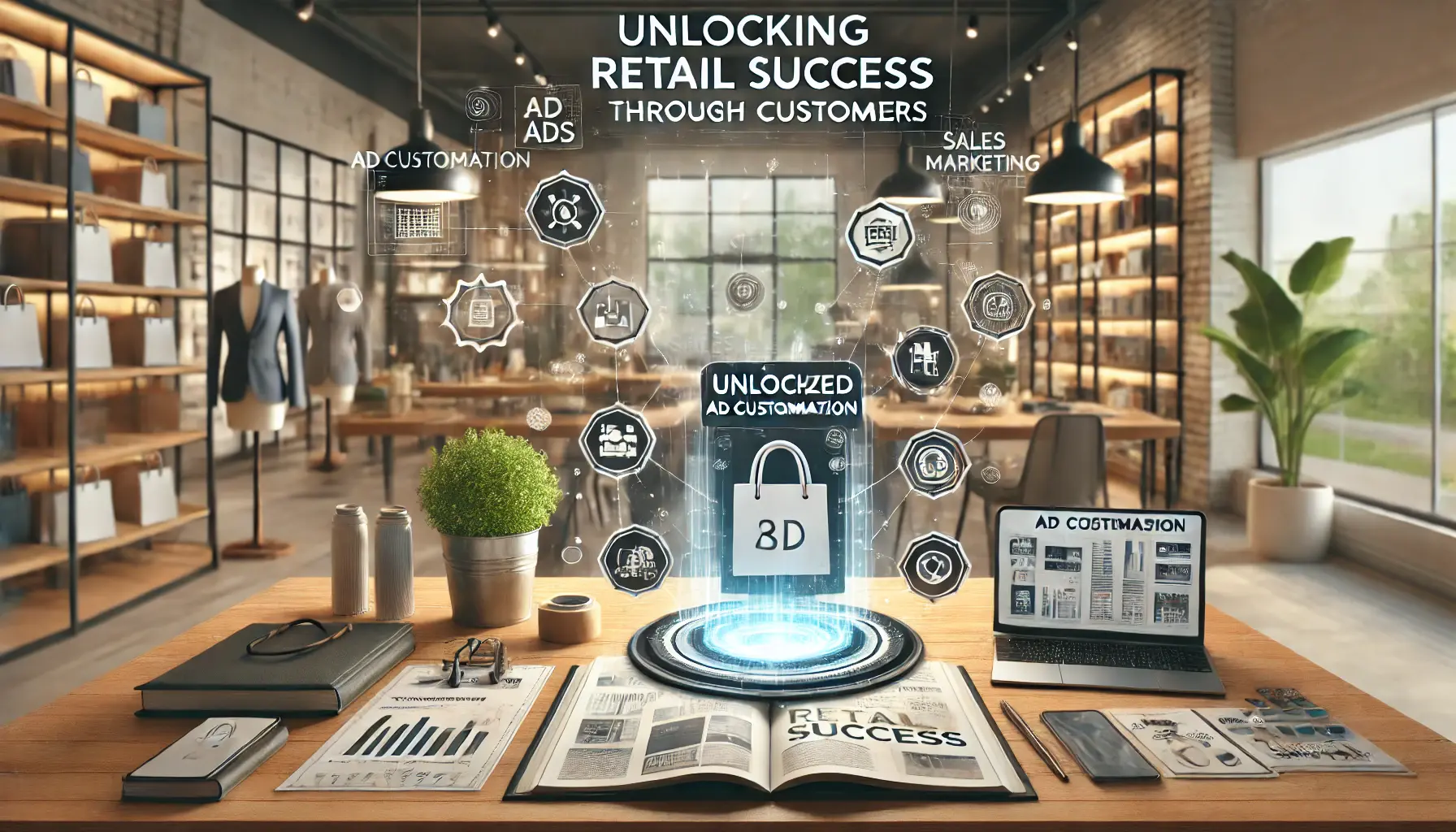
Illustration of unlocking retail success through personalized ad customization strategies.
Summary: Unlocking Retail Success Through Ad Customization
In today’s competitive retail environment, standing out requires innovative strategies that cater directly to your audience’s needs.
Ad customization has proven to be an essential tool in achieving this goal by delivering personalized, engaging, and highly targeted advertising campaigns.
By implementing the techniques discussed in this article, you can transform your approach to marketing and enhance customer satisfaction.

Illustration of key takeaways for successful ad customization with a focus on targeted advertising strategies.
Key Takeaways for Successful Ad Customization
- Personalized Product Recommendations: Through the use of customer data and AI, you can provide personalized product recommendations that reflect individual tastes and shopping behavior.
- Location-Based Targeted Advertising: With geotargeting and location-based campaigns, engage with customers when they are more likely to take action in-store and complete a purchase.
- Dynamic Content Based on User Behavior: Creating adaptable, real-time content enhances user experience and encourages conversions by providing relevant offers and information.
- Ad Customization Best Practices: Following key steps such as data collection, audience segmentation, omnichannel consistency, and respecting customer privacy ensures the success and scalability of your campaigns.
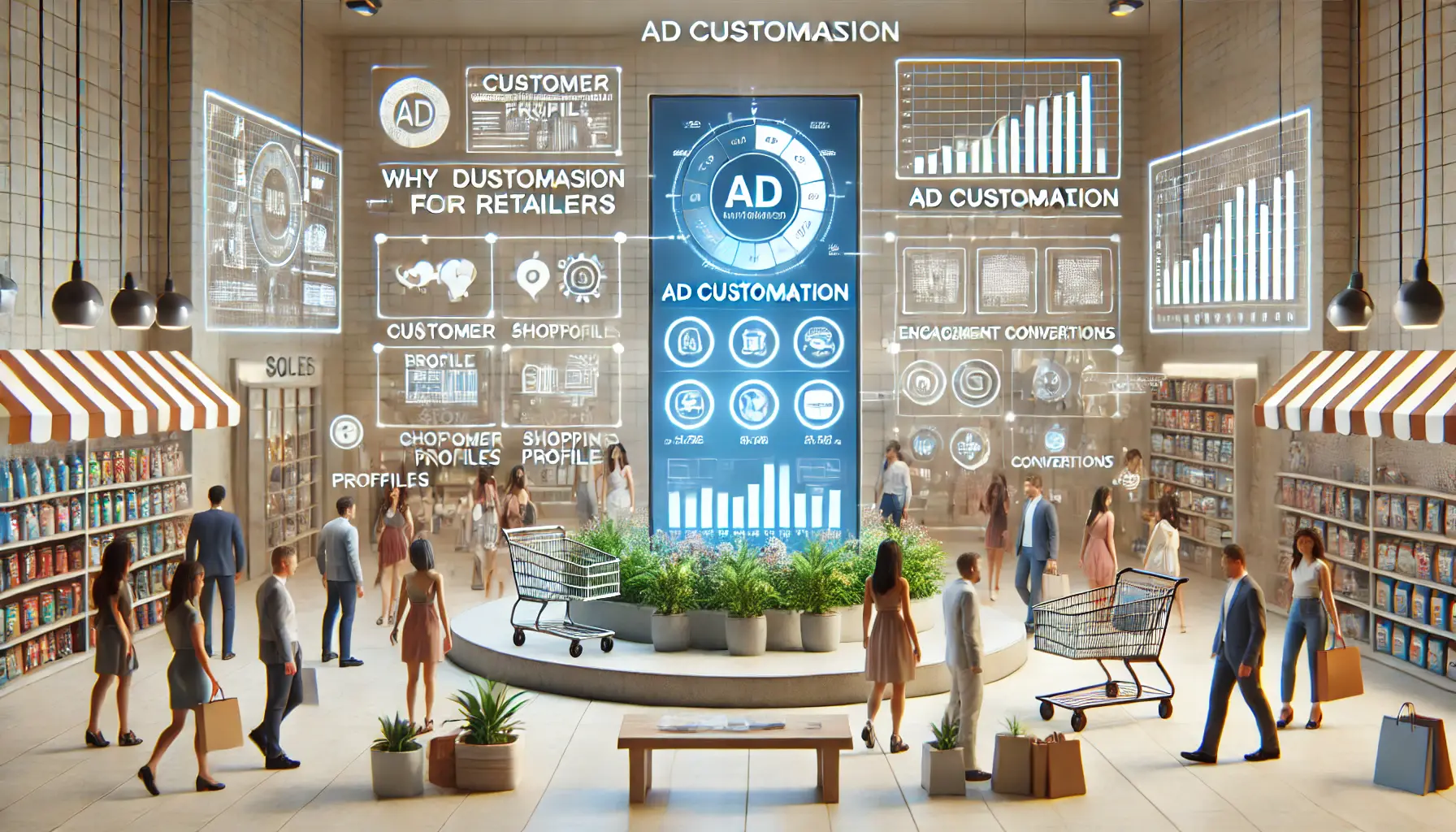
Illustration of the importance of ad customization for retailers, highlighting customer engagement and conversions.
Why Ad Customization Matters for Retailers
The modern consumer expects a shopping experience that speaks directly to their needs and desires.
Ad customization enables retailers to meet these expectations by:
- Creating meaningful connections through personalized messaging.
- Driving higher engagement and conversion rates with relevant offers.
- Building long-term customer loyalty through trust and value-driven interactions.
- Maximizing return on investment (ROI) by focusing on highly targeted audiences.

undefined
Final Thoughts
By embracing ad customization as an integral part of your retail marketing strategy, you are setting your business up for success in a dynamic and customer-driven marketplace.
The tools and ideas explored—from AI-powered product recommendations to dynamic real-time content—can help you deliver relevant experiences that capture, engage, and retain customers.
As consumer expectations continue to evolve, the role of personalized advertising will only become more important.
Apply these strategies now to create impactful campaigns that ensure not only immediate sales but also long-term customer relationships.
If implemented correctly, ad customization can be the foundation of your success, setting you apart in a competitive market and allowing you to connect with your audience in ways you never thought possible.
Ad customization drives higher ROIReturn on Investment; a metric used to evaluate the profitability of an investment or marketing effort. by delivering relevant, personalized campaigns that meet customer expectations and foster loyalty.

Illustration of frequently asked questions about ad customization in digital marketing.
Your campaigns can be managed by an agency specialized in Google Ads, check out our service page.
Frequently Asked Questions About Ad Customization
Ad customization is a powerful tool for creating personalized and engaging advertising campaigns.
Below are some common questions and concise answers to help you understand its application and benefits.
Ad customization involves tailoring ad content dynamically to match user behavior, preferences, or demographics, enhancing relevance and engagement.
By delivering personalized messages, ad customization increases click-through rates and conversions, leading to a better return on investment.
Data such as user location, browsing history, purchase behavior, and demographic information inform ad customization strategies.
Yes, ad customization can be implemented on various platforms, including Google Ads, social media, and email marketing campaigns.
Absolutely.
Ad customization allows businesses of all sizes to deliver targeted messages, making marketing efforts more efficient and effective.
Ad customization should comply with data protection regulations, ensuring transparency and obtaining user consent for data collection.
Challenges include data integration, maintaining data accuracy, and ensuring consistent messaging across different channels.
Monitor key performance indicators like click-through rates, conversion rates, and engagement metrics to assess ad customization success.
Yes, platforms like Google Ads offer features such as ad customizers and dynamic keyword insertion to facilitate ad customization.
